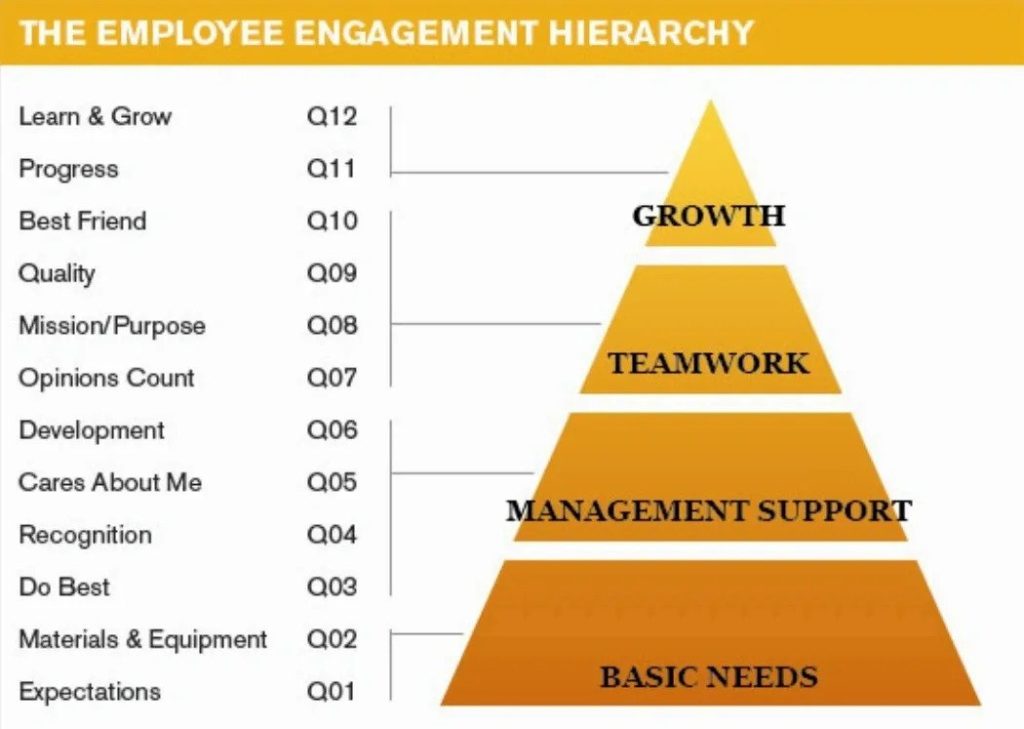


This week I started thinking about employee engagement. It has been coming up in recent coaching sessions as leaders struggle with how to motivate and inspire employees. Strong leaders know that in order to drive productivity, you need to drive engagement.
What does employee engagement mean?
Imagine a person walking along a hospital corridor and seeing a used surgical mask on the floor.
An engaged employee will likely pick it up and throw it away.
A disengaged employee will ignore it and keep walking.
And an actively disengaged employee will not only see the mask, but will kick it further in the middle of the corridor!
Gallup, who has analyzed workplace research for decades, is a trusted leader in the study and application of employee engagement. They define this term as the extent to which individuals are “involved in, enthusiastic about, and committed to their work and workplace.” Employees can fall into three groups, respectively: the “engaged,” “disengaged,” and “actively disengaged.”
Why does engagement matter?
Engaged employees are happier employees. They are productive employees. They are employees that make less mistakes. They stay committed to the tasks at hand, to their department, and to their organization. Higher engagement leads to higher profitability, productivity, and employee retention.
How do you assess engagement?
Generally speaking, most leaders can identify which category of engagement their employees fall in. Often, a group of employees can be described as those who “enjoy being at work,” those who “just come to collect a paycheck,” or those who are “unhappy and negative.”
Organizations, such as Gallup, take it a step further by surveying engagement. Below is their Q12 Survey – a simple questionnaire to measure engagement within departments, within organizations, and across many organizations in many sectors. Each question is rated on a scale of 1-5, 5 being the highest affirmation of the statement.
The questions are categorized into a pyramid that provides further insight to the importance of the questions.

How can you increase engagement?
1) Reflect on the questions that are asked in the survey.
They provide powerful information on what drives, motivates, and inspires individuals and can be the foundation for 1:1 coaching and conversations with employees. It will be difficult to work towards strengths in a
team if employees do not believe their basic needs are met, so start with the questions at the bottom of the Gallup pyramid and work your way up.
2) Implement small changes to move the needle towards engagement.

During this time of COVID crisis, ask yourself that as a leader, what are you doing to increase engagement among your employees? Can you check in on them and ensure that they have the tools to do their job remotely (Q02) or the right PPE that they need if working on the front line in healthcare (Q02)? Have you gone over what you expect from them to accomplish that may have been different than pre-COVID (Q01)? Are you giving them space to shine and do their best through their work (Q03)?
Leaders – driving engagement will help all your employees RISE, which in turn will help you RISE. So, understand engagement, review it with your employees, and implement effective changes.
If you need further help, contact me!
Aashi Arora
iRISE Executive Coaching
aashi@iriseexecutivecoaching.com
(916) 292-8862
 Preparing to Step Into CEO Roles
May 30, 2023
Preparing to Step Into CEO Roles
May 30, 2023
 Tackle Imposter Syndrome by Prioritizing This Relationship
May 12, 2023
Tackle Imposter Syndrome by Prioritizing This Relationship
May 12, 2023
 How Do You Know It’s Imposter Syndrome?
Mar 08, 2023
How Do You Know It’s Imposter Syndrome?
Mar 08, 2023
 Imposter Syndrome During a Job Transition
Jan 20, 2023
Imposter Syndrome During a Job Transition
Jan 20, 2023
 4 Strategies for A Successful Interview
Oct 19, 2022
4 Strategies for A Successful Interview
Oct 19, 2022
Please subscribe to receive a pdf of 15 Ways to Tackle Imposter Syndrome
